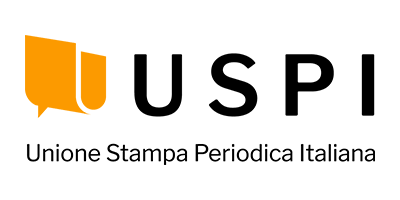Smart Water Metering Market Report 2025: Water AMI Endpoints to Double in Europe and North America by 2030 - ResearchAndMarkets.com
The "Smart Water Metering in Europe and North America - 4th Edition" report has been added to ResearchAndMarkets.com's offering. The registration and collection of water meter data has historically co...
DUBLIN: The "Smart Water Metering in Europe and North America - 4th Edition" report has been added to ResearchAndMarkets.com's offering.
The registration and collection of water meter data has historically constituted a highly resource-consuming manual task, requiring professional meter reading personnel to visit each individual metering point to optically register meter consumption values on a periodical basis. Automated meter reading (AMR) solutions which enable wireless walk- or drive-by meter reading operations have over the years automated the work of meter reading personnel to some extent and are today commonplace within water metering operations.
Throughout the past two decades, advanced metering infrastructure (AMI) solutions aimed at addressing the shortcomings of AMR by instead leveraging a fixed communications network infrastructure have evolved. By enabling high-frequency readings of detailed meter data while also allowing for direct two-way communications with the utility backoffice, AMI solutions open up entirely new possibilities for water utilities to make substantial enhancements of operational efficiency, reduce non-revenue water (NRW), and greatly improve water conservation schemes. Today, the term smart metering has become a buzzword within the water sector that is to be considered synonymous with the concept of AMI.
The number of water AMI endpoints in Europe and North America to twofold by 2030 North America today constitutes the leading market for both AMR and AMI solutions globally and had at the end of 2024 an installed base of 89.8 million active water utility AMR and AMI endpoints, representing a penetration of around 80 percent. AMI accounted for 42 million of the installed endpoints, equalling an AMI penetration of nearly 40 percent.
The research forecasts that the number of water AMI endpoints in North America will grow at a compound annual growth rate (CAGR) of 10.8 percent to reach 77.8 million units in 2030. Large-scale deployments of AMI started to gain traction in the region a decade ago and have since grown steadily with multiple projects covering more than 100,000 endpoints now completed. Today, utilities seeking to replace and upgrade their existing AMR solutions account for a substantial share of the AMI installations through meter-park upgrades.
Europe is meanwhile the second largest market for AMR and AMI solutions and had at the end of 2024 an installed base of 80.8 million active water utility AMR and AMI endpoints, translating into a penetration rate of approximately 53 percent. Less mature than the North American market, Europe had in 2024 a total of 24 million AMI endpoints installed, representing an AMI penetration of around 16 percent. The number is however forecasted to grow at a CAGR of 17.0 percent to reach 61.6 million units in 2030.
France and Spain have historically been the primary markets for water AMI solutions in Europe, but markets such as the UK, Italy, Scandinavia, the DACH region and the Benelux are now also emerging as major water AMI markets. A variety of proprietary and standards-based communications technologies are today used for water AMI deployments.
In North America, proprietary RF networking platforms have completely dominated the market and accounted for as much as 91 percent of the installed base of AMI endpoints in 2024. Meanwhile, various proprietary and open-standard RF technologies based on the EN 13757 standard accounted for roughly 43 percent of all AMI endpoints installed in Europe. The category includes Wize, which constitutes one of the most deployed technologies for water AMI in Europe.
Other proprietary RF technologies that are not based on EN 13757 accounted for over 32 percent of the European deployments. Optimised for cost-sensitive and mission-critical IoT applications, LoRaWAN and 3GPP-based LPWA technologies have become real contenders within the water AMI markets - particularly LTE-M in the US and LoRaWAN and NB-IoT in Europe. Emerging LPWAN technologies such as Mioty is also gaining traction in Europe, especially in Germany and largely thanks to Diehl Metering's advocacy of the technology. At the end of 2024, LoRaWAN was used to connect a total of 3.7 million endpoints in Europe and this number is forecasted to grow at a CAGR of 28.9 percent to reach 17.0 million in 2030.
Cellular communications meanwhile accounted for 5-7 percent of the installed base in both regions and is also forecasted to see massive growth throughout the forecast period, primarily driven by 3GPP-based LPWA deployments. The water AMI and AMR markets in Europe and North America are largely served by local or regional players and only a few companies such as Itron, Sensus (Xylem), Honeywell, Kamstrup, the Arad Group and the Minol-ZENNER Group have managed to establish a major presence in both regions. At the end of 2024, the top 5 water AMI endpoint vendors in North America in terms of installed base were Sensus, Badger Meter, Itron, Aclara (Hubbell) and the Neptune Technology Group (Roper Technologies).
The top 5 water AMI endpoint vendors in Europe comprised Diehl Metering, Itron, Sensus, Birdz (Veolia) and Kamstrup. The SUEZ subsidiary SUEZ Smart Solutions also constitutes a key player in the European water AMI market by having been instrumental to the development and deployment of Wize technology.
Highlights from the report
- Insights from 30 new executive interviews with market leading companies.
- 360-degree overview of next generation RF and cellular standards for water AMI communications.
- Comprehensive overview of the water utility markets in Europe and North America.
- Profiles of the key players in the water AMI and AMR industry in Europe and North America.
- In-depth analysis of the development of AMI deployments in Europe and North America.
- Detailed market forecasts by region and technology lasting until 2030
Key Questions Answered
- Which are the main water utilities in Europe and North America?
- Which major trends are shaping the water AMI markets in Europe and North America?
- What are the main differences between the European and North American water AMI markets?
- Which are the leading providers of water AMI and AMR solutions in Europe and North America?
- What are the main communications technology alternatives for water AMI deployments?
- Which are some of the largest water AMI projects in each region?
- How will the communications technology landscape for water AMI change in the coming years?
- What is the outlook for emerging LPWA networking technologies in the water AMI market?
Key Topics Covered:
1 Water Services in Europe and North America
1.1 Water services sector in Europe and North America
1.1.1 The organisation of water service management
1.1.2 Residential water rates and consumption
1.1.3 European water distribution system operators
1.1.4 North American water distribution system operators
2 Smart Water Metering
2.1 Introduction to water metering
2.2 Remote meter reading systems
2.3 Project strategies
2.3.1 System design and sourcing
2.3.2 Rollout and integration
2.3.3 Implementation and operation
2.3.4 Communicating with customers
2.3.5 Individual rights issues
3 IoT Networks and Communications Technologies
3.1 IoT network technologies
3.1.1 Network architectures
3.1.2 Unlicensed and licensed frequency bands
3.2 3GPP cellular technologies
3.2.1 2G/3G/4G/5G cellular technologies and IoT
3.2.2 The role of cellular networks in smart meter communications
3.2.3 NB-IoT of LTE-M network deployments in Europe and North America
3.3 LoRa and LoRaWAN
3.3.1 Technology characteristics and network footprint
3.4 Sigfox
3.5 Mioty
3.6 RF technology and standards
3.6.1 EN 13757
3.6.2 Proprietary RF networking platforms
4 Smart Metering Industry Players
Meter vendors
- ADD Grup
- Apator
- Arad Group
- Axioma Metering
- B METERS
- Badger Meter
- Diehl Metering
- E. Wehrle Group (Sontex)
- Engelmann Sensor
- FILA
- GWF
- Hidroconta
- Honeywell
- INTEGRA Metering
- Iskraemeco
- Itron
- Janz (SIT Group)
- Kamstrup
- Lorenz
- Landis+Gyr
- Maddalena
- Metron
- Minol-ZENNER Group
- Mueller Systems
- Neptune Technology Group (Roper Technologies)
- QUNDIS
- Sagemcom
- Sensus (Xylem)
Communications solution providers
- Aclara (Hubbell)
- Abering
- AIUT
- APKAPPA
- Birdz (Veolia)
- Connexin
- Ista
- Netmore
- Sontex
- SUEZ Smart Solutions
- Techem
- Technolog (Roper Technologies)
- Telereading
- Vodafone
Software solution providers
- Atlantica Digital
- Dropcountr
- Ferranti
- Harris Utilities
- Idrica (Xylem)
- Indra
- Oracle
- TaKaDu
- Terranova Software
- VertexOne
5 Water AMR/AMI Market Profiles
5.1 Europe
5.2 North America
6 Water AMR/AMI Projects in Europe and North America by Technology
6.1 Water AMI projects in Europe by technology
6.1.1 Wize and EN 13757-based RF
6.1.2 Proprietary RF technologies not based on EN 13757
6.1.3 LoRaWAN, Mioty and Sigfox
6.1.4 Cellular communications
6.2 Water AMI projects in North America by technology
6.2.1 Proprietary RF networks
6.2.2 Cellular communications
7 Market Analysis
7.1 Market forecasts
7.2 Industry analysis
7.3 Market trends
7.3.1 Transition from mechanical to static metering technologies
7.3.2 Rapidly growing adoption of standards-based LPWA
7.3.3 AMI network implementation and operational models are changing
7.3.4 Realising the full potential of water AMI beyond meter-to-cash
7.3.5 Digital security - a top priority for future smart water networks
For more information about this report visit https://www.researchandmarkets.com/r/2ahj8t
About ResearchAndMarkets.com
ResearchAndMarkets.com is the world's leading source for international market research reports and market data. We provide you with the latest data on international and regional markets, key industries, the top companies, new products and the latest trends.
Fonte: Business Wire
Related news
Last News
RSA at Cybertech Europe 2024
Alaa Abdul Nabi, Vice President, Sales International at RSA presents the innovations the vendor brings to Cybertech as part of a passwordless vision for…
Italian Security Awards 2024: G11 Media honours the best of Italian cybersecurity
G11 Media's SecurityOpenLab magazine rewards excellence in cybersecurity: the best vendors based on user votes
How Austria is making its AI ecosystem grow
Always keeping an European perspective, Austria has developed a thriving AI ecosystem that now can attract talents and companies from other countries
Sparkle and Telsy test Quantum Key Distribution in practice
Successfully completing a Proof of Concept implementation in Athens, the two Italian companies prove that QKD can be easily implemented also in pre-existing…






